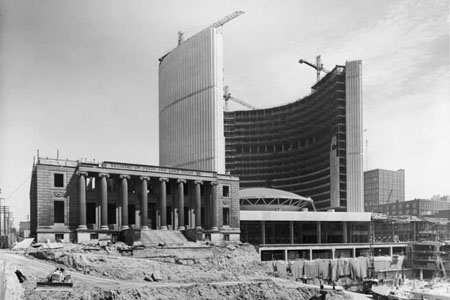This article is from our Toronto Feature series. Features from past programs are not updated.
This content is from a series created in partnership with Museum Services of the City of Toronto and Heritage Toronto. We gratefully acknowledge funding from the Ontario Ministry of Tourism, Culture and Sport, and the Department of Canadian Heritage.
"Viljo Revell's Breath-taking New City Hall"
Two university architecture students saved Toronto from a bland, boxy new city hall. Peter Richardson and Harvey Cowan campaigned for an international competition and after the proposed design was defeated in a plebiscite, city council agreed. More than 500 designs were submitted from around the world. When the winner was announced, it sparked controversy and amazement. Mayor Nathan Phillips called the design "breath-taking."
The winning architect was Viljo Revell, who was born in 1910 at Vaasa, a town on the west coast of Finland. Rugged and physically imposing, Revell was a modest man. His unique design featured 2 curved towers embracing a central council chamber and opening into an expansive public square, one of Canada's, and indeed the world's, most recognizable buildings.
Mayor Nathan Phillips turned the first sod for the new City Hall on 7 Nov 1961. The surrounding square had already been named in his honour for he had been a tireless advocate of the project. His Excellency Governor General George P. Vanier formally opened the new building on 13 Sept 1965, in the presence of Prime Minister Lester B. Pearson, Ontario Premier John Robarts and some 14 000 onlookers.
As picturesque in its way as E.J. Lennox's sandstone Old City Hall, Revell's building is a fitting neighbour and unmatched symbol of a confident city. Unfortunately, Revell died of a heart attack before his masterpiece was completed.
See also Architectural Competitions.

 Share on Facebook
Share on Facebook Share on X
Share on X Share by Email
Share by Email Share on Google Classroom
Share on Google Classroom



